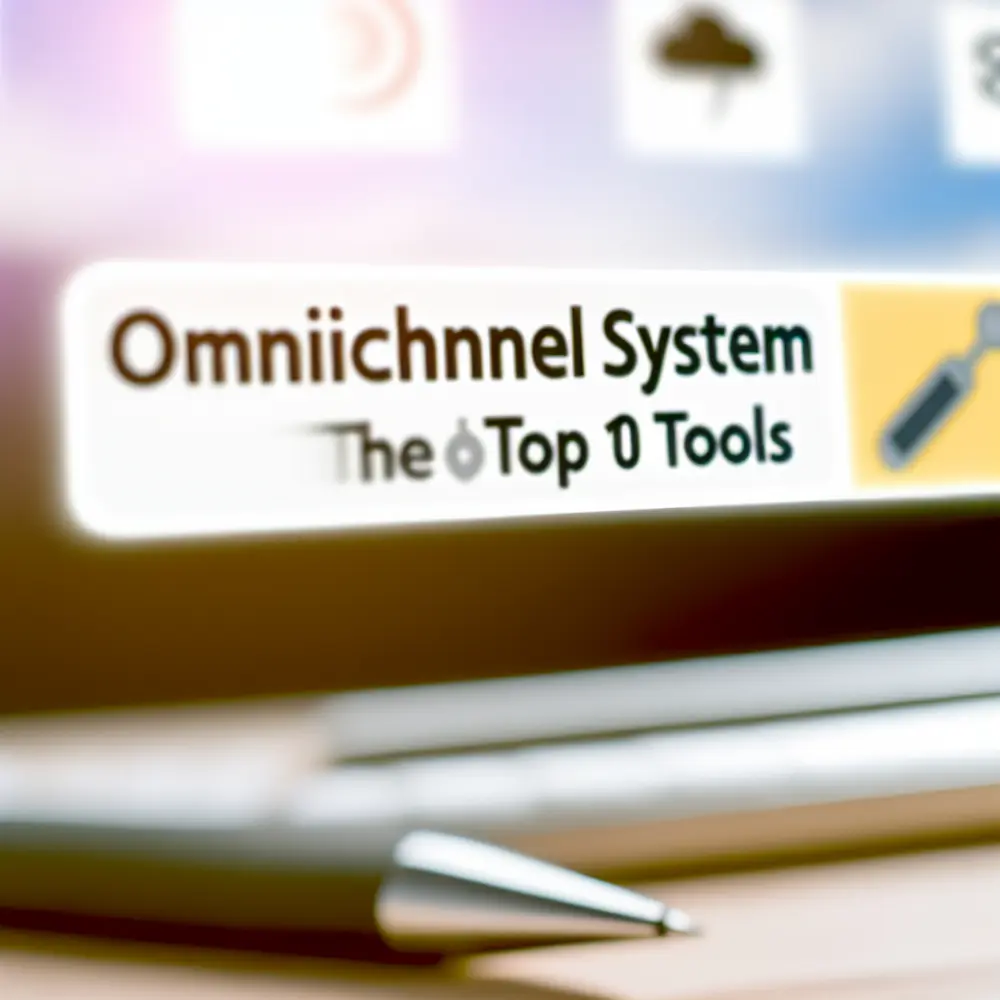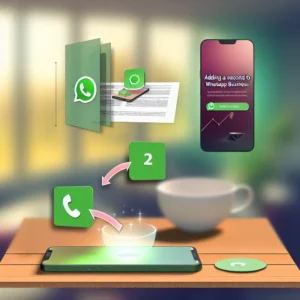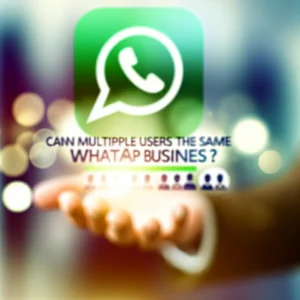The modern marketplace demands that businesses keep pace with customer expectations across multiple platforms. The challenge lies in ensuring a seamless transition between these channels for a coherent experience. With the ever-increasing complexity of customer interactions, understanding the nuances of an omnichannel system is crucial.
You will find that navigating the complexity of customer engagement across various touchpoints often leads to missed opportunities. Without a structured approach, the potential for brand loyalty diminishes as customers encounter frustrations along their journey. The advantages and disadvantages of WhatsApp Business can help you make more informed decisions.
Moreover, selecting the right tools can seem overwhelming with rapid technological advances. However, recognizing the essential components of an effective omnichannel strategy helps you align your business goals effectively with customer needs.
Introduction to Omnichannel Systems
“Just three months after implementing the omnichannel system, our customer satisfaction scores increased by 40%!” – Retail Entrepreneur
An omnichannel system represents a comprehensive approach that integrates multiple channels and enables you to provide a seamless customer experience. It acknowledges that your customers interact across platforms—such as online stores, social media, email, and in-person—and ensures these interactions are connected.
By implementing an omnichannel system, you significantly improve customer engagement. With tools like CRMs and marketing automation, you gather data across all channels and gain insights to personalize customer experiences. This data-driven approach enables your marketing managers and sales teams to tailor strategies to meet customer preferences, increasing satisfaction and loyalty.
An omnichannel system also optimizes operations and fosters collaboration within your teams. For example, sales teams can access customer information from various channels, providing relevant context for conversations. This cohesion enhances internal efficiency and boosts customer interactions, making customers feel understood and valued, regardless of their chosen platform.
To fully leverage the benefits of an omnichannel system, it is crucial to select the right tools. From customer support software like chatbots to analytics tools that track engagement patterns, the range of options is vast. Integrating an AI-powered WhatsApp chatbot can enhance the experience by providing instant support while collecting valuable insights to refine marketing strategies, especially through WhatsApp chatbots.
Ultimately, adopting an omnichannel system in today’s competitive landscape is no longer optional; it is a necessity. By understanding the dynamics of various channels and leveraging advanced tools, you ensure your business remains relevant and responsive to customer needs. Explore the top 10 tools for implementing an omnichannel strategy and consider how they can work together to create a coherent customer journey across all touchpoints.
Key Benefits of Implementing an Omnichannel Strategy
“After adopting an omnichannel approach, our sales increased by 25%!” – E-commerce Entrepreneur
Implementing an omnichannel system offers significant benefits for businesses like yours aiming to improve the customer experience:
- Seamless interactions across different platforms.
- Deeper customer insight through integrated data.
- Increased operational efficiency through channel synchronization.
- Cost reductions via improved customer retention.
- Brand consistency across all communication channels.
Additionally, an omnichannel strategy fosters deeper customer insights. By integrating data from various touchpoints, you analyze consumer behavior and preferences more effectively. This analytical capability allows your teams to tailor campaigns and offers specifically to each customer segment, ultimately leading to higher engagement and conversion rates.
Enhanced operational efficiency also becomes a core advantage. Synchronizing various sales and communication channels reduces redundancies and improves response times. This leads to better resource allocation, enabling your teams to focus on value-adding tasks like nurturing leads or improving customer service through effective tools such as the WhatsApp chatbot.
Cost reductions should not be overlooked either. Streamlined processes and improved customer retention through a robust omnichannel approach contribute over time to lower operational costs. You can leverage existing marketing efforts and reduce customer acquisition costs while fostering loyalty through an enhanced customer experience.
Finally, adopting an omnichannel system ensures brand consistency is maintained. Customers receive a unified message, aesthetic, and service experience, which strengthens brand identity and builds trust. This positions your company favorably in a competitive market.
Criteria for Choosing the Right Omnichannel Tools
“Choosing the right tools completely transformed our customer engagement strategy!” – Marketing Manager
Selecting appropriate tools for an omnichannel system has significant impacts on business outcomes and customer satisfaction. Start with several key criteria:
- Integration capabilities with existing platforms.
- User experience for teams and customers.
- Scalability to support business growth.
- Cost-effectiveness relative to benefits.
- Analytics and reporting capabilities for informed decisions.
Lastly, prioritize analytics and reporting capabilities. Tools offering advanced analytics provide insights into customer behavior, engagement patterns, and overall channel performance. These insights are critical for data-driven decisions and optimizing marketing strategies for increased revenue growth.
Top 10 Omnichannel Tools for Businesses in 2025
“We optimized our operations and customer service with the right tools, resulting in a 30% efficiency increase!” – Operations Manager
With the evolution of businesses, integrating an omnichannel system has become essential. The following tools not only improve customer experience but also optimize internal processes:
- WhatsApp Chatbot: Provides real-time customer support and automates responses.
- HubSpot: Powerful CRM tool for omnichannel marketing management.
- Salesforce: Integrates customer touchpoints for effective relationship management.
- Zendesk: Enhances communication with a unified customer service platform.
- Shopify: Manages inventory and customer tracking for a coherent shopping experience.
- Sprout Social: Excellent for managing social media for business.
- ActiveCampaign: Combines email marketing and automation with CRM features.
- Oracle CX: Offers advanced analytics for personalizing customer experiences.
- Microsoft Dynamics 365: Integrates CRM and ERP for optimized operations.
- Hootsuite: Essential for social media management and reporting.
Comparative Analysis of Top Omnichannel Tools
“We found that using the right omnichannel tools improved customer engagement metrics by 50%!” – Digital Marketing Analyst
In today’s market situation, utilizing an effective omnichannel system is critical to delivering a seamless customer experience. Available tools differ significantly in features, integrations, and user-friendliness.
HubSpot stands out with its all-in-one CRM approach, integrating seamlessly with various platforms to track interactions. Its powerful analytics enable marketing managers to gain insights and optimize campaigns.
Zendesk, known for comprehensive customer support features, enables companies to reach customers across multiple channels. Its automation capabilities increase efficiency, allowing sales teams to focus on complex interactions.
Salesforce is known for its extensive customization options, offering detailed analytics and reports that help understand customer journeys and target marketing managers aiming for tailored experiences.
For smaller businesses, Freshdesk simplifies communication across multiple channels with an intuitive interface that consolidates emails and chats in one dashboard, making it user-friendly and efficient.
The integration of WhatsApp chatbot technology is revolutionary. It enables real-time interactions, automates responses, and personalizes engagement, which is critical for modern customer expectations.
Case Studies: Success Stories with Omnichannel Tools
“Our sales doubled after integrating an omnichannel strategy!” – Fast Food Chain Manager
Successful implementation of an omnichannel system can transform businesses, as seen in various case studies. Examples include:
- A retail company that integrated multiple channels, including a WhatsApp chatbot, which improved customer interactions and led to a significant increase in satisfaction.
- A fast-food chain that adopted an omnichannel approach, unifying its marketing and sales across platforms, resulting in rising sales figures.
- A financial services firm that achieved 30% faster response times by combining traditional and digital communication methods.
- An e-commerce platform that used an omnichannel strategy to reduce cart abandonment rates through real-time assistance via WhatsApp.
- A telecommunications company that integrated customer service channels, including a WhatsApp chatbot, enabling a seamless customer journey.
Best Practices for Implementing an Omnichannel System
“Success in omnichannel is based on clear goals and excellent team training!” – Strategy Consultant
Strategic planning is critical for successful omnichannel implementation. Here are best practices to consider:
- Set clear objectives aligned with overarching business goals.
- Integrate communication channels for a seamless experience.
- Ensure message consistency across all channels.
- Invest in team training on the technologies used.
- Measure success using analytics tools.
Finally, measuring success is crucial. Use analytics tools to track customer interactions and engagement metrics, gaining insights into areas needing improvement. Regular assessments refine strategies and adapt to market changes.
Future Trends in Omnichannel Marketing
“71% of consumers expect companies to deliver personalized interactions.” – Marketing Research Report
With the evolution of omnichannel systems, increasing personalization will be a key trend. By leveraging data analytics, companies can create tailored experiences based on individual preferences.
Automation tools will reshape interaction as chatbots like the WhatsApp chatbot simplify communication and enhance customer experiences by efficiently managing inquiries.
Integrating online and offline experiences is critical as customers expect consistency. Advanced tools can unify customer data to create a coherent journey that enhances engagement and loyalty.
The use of social media for marketing and customer support is becoming increasingly important as companies develop campaigns connecting with users where they are most active.
Additionally, data privacy and security are paramount as customer awareness grows. Businesses must prioritize transparent data practices to build trust and create a secure omnichannel environment.
Common Challenges and Solutions in Omnichannel Implementation
“Early identification of challenges in the implementation process can save time and resources!” – Business Consultant
Omnichannel implementation brings challenges that can disrupt customer experiences. Identifying these challenges and their solutions is crucial for navigating the omnichannel landscape:
- Data integration: Invest in comprehensive CRM systems for a complete customer overview.
- Inconsistent messaging: Establish communication policies for alignment.
- Navigating technology: Conduct thorough research to define business needs.
- Staff training: Comprehensive training programs to equip teams effectively.
- Measuring success: Define KPIs aligned with goals using analytics tools.
Embracing the Omnichannel Future
“Implementing an omnichannel system is critical to our growth strategy.” – CEO of an innovative company
Embracing an omnichannel system means a profound change in how businesses and customers interact. By integrating channels such as social media, email, and chat, you create a seamless customer experience. Your audience should receive consistent messages whether engaging via websites, apps, or instant messaging platforms.
Investing in the right omnichannel tools enhances engagement by enabling you to track interactions across channels and personalize communication. Integrating WhatsApp chatbots exemplifies adaptability in managing the complexity of customer journeys.
Analytics play a crucial role in understanding consumer preferences. Data derived from omnichannel interactions help optimize strategies and marketing efforts and ensure efficient resource allocation to meet the demands of a competitive market.
A collaborative approach between departments fosters cohesive campaigns that resonate with target audiences. Alignment between marketing and sales teams allows continuous refinement of offerings based on customer insights.
In summary, the omnichannel system is essential for business survival. Organizations embracing this change position themselves for sustainable growth in a connected world. Discover the best tools and strategies to enhance your omnichannel approach at Nexloo.









